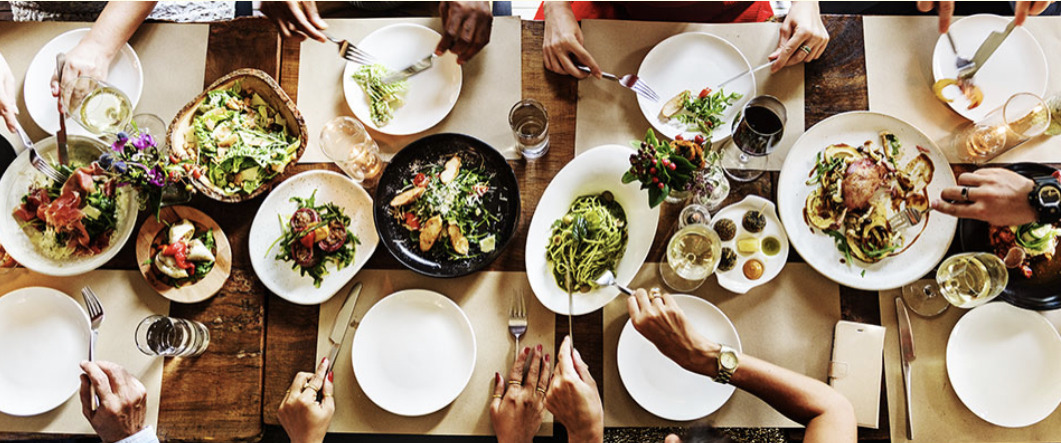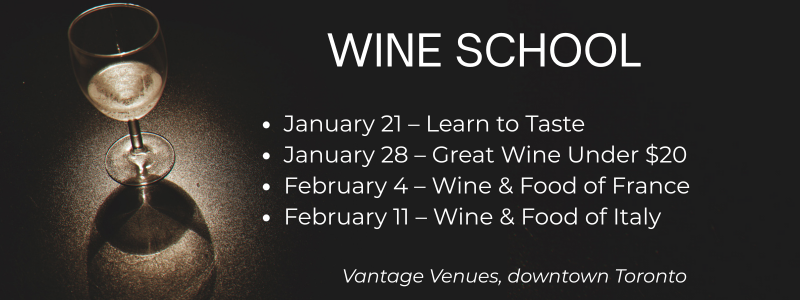Food and Wine Pairing 101

You got this.
By Erin Henderson
People get so stressed out about food and wine pairing.
We obsess over the “best” match, or the “proper” pairing. I suppose, like most confounding subjects that cause us strife and consternation, media has played a part in the anxiety: regular articles about the “best wine” for your [insert holiday here] dinner or the “three wines you need to know to be an expert” constantly pop up in food and drink publications.
But really, at the heart of it, we already know what flavours work and what don’t. It’s why we have peanut butter and jam sandwiches, and we don’t have salmon flavoured bubble gum. It’s why we put salt on French fries, but not on cheesecake.
Still, after teaching Wine School and hosting wine tastings for 15 years, I appreciate pairings can cause foodies to fret. Just recently, while leading a wine class for a group of advanced students mid-way through a wine specialist certificate, I was surprised when the class asked for a refresher on the rules of food and wine pairings. So, I thought, if they felt they needed it, maybe you would like a brush up too.
.jpg)
1. Match Weights
In the same idea as white wine with white meat, and red wine with red meat, which overall isn’t a terrible guide, I think it’s slightly more specific to think along the lines of weight.
Light structured food, light-bodied wine. Rich food, powerful wine. It’s a simple as that.
To expand, let me make an analogy. (I’m not much of a sportswoman, but hopefully you’ll pick up what I’m throwing down.)
In the NHL, there’s a first-place team and there’s a last-place team (I have zero idea who these teams are, but that’s not the point.) Should these two teams meet for a game, it will be dreaded humiliation for the fans of the last place team, and a walk in the park for the smug fans of the first-place team. However, even the supporters of the first-place team will eventually lose interest and flip the channel because there’s no tension in the game. No excitement, no rush of energy, nothing to keep them enthralled and at the edge of their seats. It’s boring.
Think of wine and food the same way. You want tension, you want energy. You want Game 7 of the Stanley Cup.
Should you pair your favourite Pinot Grigio with a spicy steak au poivre, that meat is simply going to clobber the wine into oblivion. You would be better off with a peppery Syrah from the Northern Rhône, which has the gravitas to stand up to the full-flavoured beef.
Similarly, should you serve that northern Rhône Syrah with a dish of delicately seared white fish, the fish won’t stand a chance. The light Pinot Grigio is a much better match in this case.
2. Compliment
Think about matching the flavours of the wine to the flavours of the dish.
For this example pairing, let’s take Sauvignon Blanc, a white wine with lots of herbal, grassy flavours ranging from asparagus to bell pepper to fresh basil. These flavours would complement a green salad full of different lettuces, or a pasta primavera with loads of vegetables.
Another classic example is rich lobster meat served with melted butter. A full-bodied, buttery Chardonnay is a good compliment.
Think about the flavours most prominent in your food, and aim for a wine that holds those same flavours.
3. Contrast
This is my favourite way to pair food and wine.
Here, instead of complimenting the flavours, we’re contrasting the structure the wine and the food. And we do this in two primary ways: acid with fat or tannin with protein.
Pairing a high acid wine – Riesling, Sauvignon Blanc, Pinot Noir, or Chianti, for example – with a rich meal works wonderfully. The acid in the wine cleanses the palate of the fat, while the oil in the dish rounds out the angularity of the wine.
Pinot Noir, with its tart fruit and juicy acidity, is gorgeous with duck confit – rich duck legs slow cooked in their own fat. The bracing wine softens from fat in the oil, while the rich meat is brightened by the acid in the wine.
Meanwhile, when it comes to tannin – the grippy feeling left in your mouth when drinking powerful red wines (you also find this drying sensation in dark chocolate, black tea, and walnut skins) – we need protein to stand up to that tannin and wrestle it into submission. Tannin and protein lock onto each other in a sexy tango which brings out the best in each other: the protein softening the tannin, and the tannin calming the protein.
4. Watch Out for Sweet
Your wine must always be sweeter than your food.
Where the rest of the guidelines on this list have some flexibility and license to interpretation, the rule of wine pairing with sweet foods is cardinal. Otherwise, both will end up tasting bitter, flat, and flavourless.
If you’re having something gently sweet, such as a strawberry shortcake, a spritzy Moscato d’Asti would do the trick. If you’re pulling out all the stops with a triple threat chocolate brownie, this needs something certifiably sweet like a port or Cabernet Icewine. And perhaps an insulin shot.
5. Watch Out for Spice
Spice is more a sensation than a flavour. Whether a fresh Scotch Bonnet pepper or dried cayenne, hot spices aggravate your palate. We all have our thresholds to what is pleasurable and what is painful. And what is pleasurably painful, but that’s a topic for another day. And another blog.
Anyway, just like spice, alcohol is also an aggressor on the palate. Think about taking a shot of whisky. You’re probably feeling the burn just reading that sentence. Or the last time you cut yourself and needed to clean the wound with high-percentage (non-drinkable) rubbing alcohol. It likely stung; it certainly wasn’t a sensation you were anxious to feel again.
When I was in university I worked at a Mexican restaurant where suburban gringos would try to outdo one another with their ability to take the heat. Inevitably, once or twice a night, someone would push their limits one Scoville unit too far and the physical pain would lead to emotional panic. We nursed the patient through it by giving a complimentary shot of … milk. The dairy and soothing lactic acids helped quell the fire and calm the burn.
So, thinking about that lactic, creamy, sweet milk, let’s do the same with wine. Look for low alcohol, low tannin, possibly off dry, and fruit-forward bottles. Riesling and Gewürztraminer are common pairings, but they’re not the only ones. I’m currently taking an Indian cooking class and the first lesson was lamb curry. A fruity Beaujolais paired beautifully.
6. Pair to the Strongest Flavour on the Plate
We all know the old trope on the back label of the bottle: “this wine goes with chicken, beef, or fish.”
OK. Would that be Sunday’s roast chicken or a fragrant chicken curry? Is this the aforementioned steak au poivre or dill-laced beef stroganoff? Or are we talking seared salmon with maple glaze or poached sole in a delicate lemon sauce?
As you can see, there are a lot of variables to consider.
Often in wine pairing we only think about the “star” of the dish, which is generally the protein – fish, chicken, beef. But what we really need to do is look to the strongest flavour of the dish, which is usually the sauce or the spice.
Pasta tastes like nothing until you top it with a tangy red sauce which would go beautifully with a Chianti Classico. But change that preparation to a rich and creamy carbonara, then a bubbly Franciacorta from Lombardy would make for a delicious pairing.
7. Select Wine as You Would a Condiment
You will often here the phrase, “what grows together, goes together” in the wine world. And that’s great when talking about ancient regions like Burgundy or Piedmont and their centuries-old wine making and traditional recipes. But what about Ontario or California?
Instead, I prefer to think of the wine as you would any other sauce, spice, or seasoning.
Perhaps you have roast turkey on your weekend menu. What do people typically slather on the meat? Rich gravy and tart cranberry sauce. (Because no one likes turkey and needs to cover it up with other flavours. I digress.)
Now lean on a few of the rules we’ve already learned: what wines same properties? Buttery Chardonnay works like silky gravy; Pinot Noir has juicy red berry notes like cranberry. Both of those wines would be terrific pairings for your turkey dinner.
Your next read: Pair Your Wine Like a Condiment

